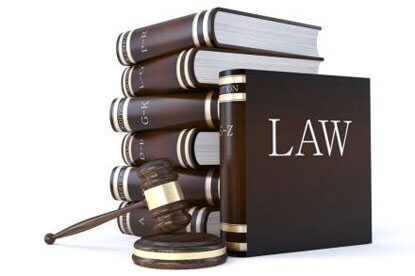In a recent federal indictment unsealed on August 1, a former U.S. Department of Justice (DOJ) official and four other lawyers have been identified as alleged co-conspirators in former President Donald Trump’s alleged attempt to subvert the results of the 2020 election. While the indictment does not explicitly name the individuals, details provided strongly suggest that among them are prominent figures like Trump’s lawyer, Rudy Giuliani, and former Chapman University law professor John Eastman, according to reports from the New York Times, the Washington Post, and Reuters.
The indictment outlines a series of allegations, contending that Trump disseminated false information claiming widespread election fraud altered the outcome of the 2020 election in his favor. The indictment asserts that Trump was aware of the falsehood of these claims but continued to promote them, aiming to lend an air of legitimacy to his baseless assertions. Furthermore, the indictment alleges that this misinformation campaign was designed to create a climate of national mistrust and anger, eroding public confidence in the election process.
While Trump was within his First Amendment rights to voice his opinions and challenge the election results through legitimate channels such as legal actions and recounts, the indictment argues that he also pursued unlawful avenues to undermine the election’s outcome.
See also: Federal Charges Filed Against Trump for Attempting to Overturn 2020 Election
The indictment is divided into four counts, detailing the following allegations against Trump:
- Conspiracy to defraud the United States by employing false claims of election fraud to obstruct the counting and certification of the election results.
- Conspiracy to obstruct an official proceeding, specifically the certification of the electoral vote.
- Obstruction and attempted obstruction of an official proceeding refer to the certification of the vote.
- Engagement in a civil rights conspiracy by attempting to interfere with the right to have votes properly counted.
The co-conspirators, identified as Co-Conspirators 1 to 5 in the indictment, are lawyers who played distinct roles in the alleged scheme:
- Co-Conspirator 1 is a lawyer who was reportedly willing to propagate knowingly false claims and strategies that Trump’s campaign attorneys would not endorse. This individual is believed to be Giuliani, who led Trump’s efforts to challenge the election results.
- Co-Conspirator 2 is suspected of devising a strategy to exploit the vice president’s ceremonial role overseeing the certification process to obstruct the presidential election’s certification. This lawyer is likely Eastman, who has denied the allegations.
- Co-Conspirator 3 is a lawyer who made unfounded election fraud claims, acknowledged by Trump as sounding implausible. This lawyer aligns with Sidney Powell, known for promoting claims of hacked voting machines. Powell believes her assertions will be vindicated.
- Co-Conspirator 4, a DOJ official, allegedly attempted to use the Justice Department to initiate baseless election crime investigations and influence state legislatures using false claims of election fraud. This official is believed to be Jeffrey Clark, whom Trump considered appointing as acting U.S. attorney general.
- Co-Conspirator 5, another lawyer, supposedly participated in developing a plan to submit fraudulent slates of electors to obstruct the certification process. This attorney could be appellate attorney Kenneth Chesebro, who suggested recognizing fabricated pro-Trump electors in Congress on January 6, 2021.
It’s worth noting that the description of Co-Conspirator 5 has been deemed vague enough to apply to several lawyers, according to the New York Times. A sixth potential co-conspirator remains unidentified at present.
Take control of your legal job search and sign up for LawCrossing today.
It’s important to highlight that, as of now, none of the alleged co-conspirators have been formally charged. The indictment raises significant legal and constitutional questions revolving around the fine line between free speech, legitimate challenges to election results, and potentially illegal actions to undermine the democratic process. This case will likely garner substantial attention as it unfolds, shedding light on the boundaries of permissible behavior in the realm of election disputes.
Don’t be a silent ninja! Let us know your thoughts in the comment section below.









































 Read the full report here: The Trusts and Estates Law Boom: A Comprehensive Analysis of Market Trends, Career Opportunities, and Regional Variations
Read the full report here: The Trusts and Estates Law Boom: A Comprehensive Analysis of Market Trends, Career Opportunities, and Regional Variations  Trusts & Estates Law Is Booming BCG Attorney Search’s latest report reveals why this once-niche practice […]
Trusts & Estates Law Is Booming BCG Attorney Search’s latest report reveals why this once-niche practice […]
